MARKET INSIGHT & OUR UPCOMING SHIPMENTS
We’ve got an awesome lineup of coffees coming your way from Colombia, Brazil, Peru, Uganda, Rwanda, and Indonesia. Samples started arriving in July, and more will be available this month. Shipments will be landing in our warehouse from September onwards – depending on the origin.
While we always make sure to have coffees stocked up in our Belgium warehouse for quick dispatch, it’s still important to plan ahead. To make sure you don’t run short on greens, reach out to your sales representative or coffee@nordicapproach.no. We can work together to find the best options that give you top-notch quality at the right price.
Here’s an overview of what’s in store for the second half of the year.
PERU
- Harvest: May – September
- PSS (pre-shipment samples): September
- Shipping: August – October
- Warehouse arrival: October – December
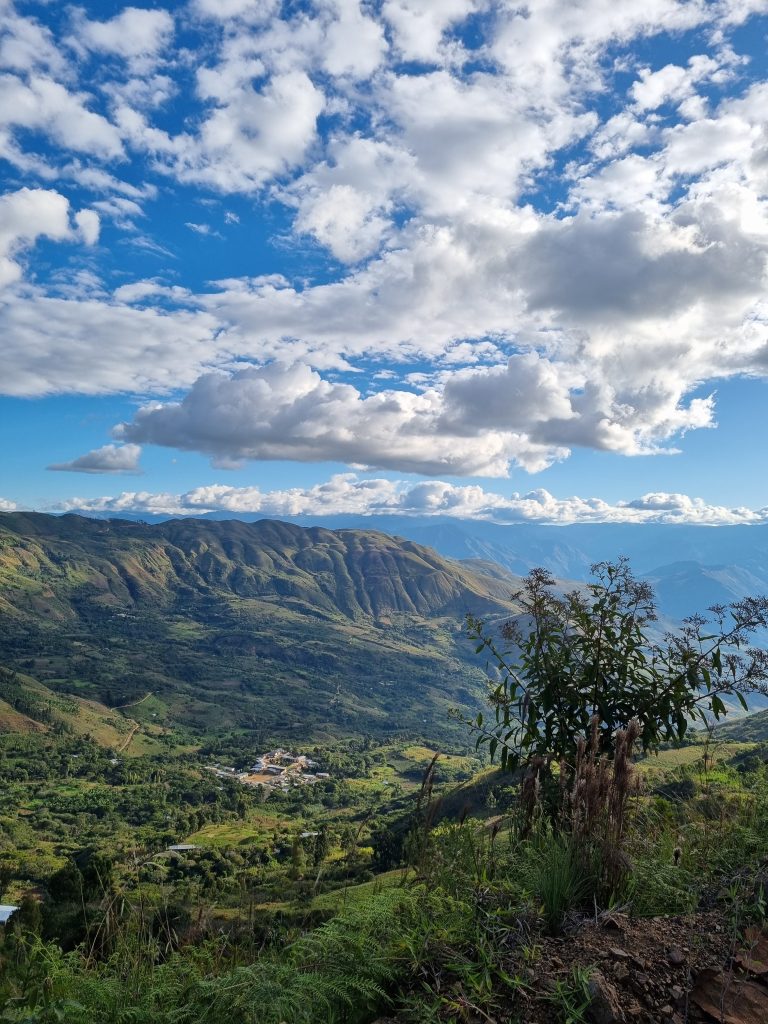
With Peru’s harvest finishing up in September, Joanne is currently at origin for field visits, reconnecting with our suppliers. Gabe will also be travelling in September, to cup and finalise our selected lots. Offer samples are on their way to our lab, which we’re expecting to cup the next couple of weeks! Pre-shipment samples will be available for you to try very soon.
This year, we’ve observed slightly lower prices for parchment. However, to get exceptionally high-quality microlots, there is a trade-off. The yield factor, indicating how much parchment is needed to produce a certain quality of coffee (69 kg bags in this case), has been lower this year, particularly for higher quality coffees. Consequently, more parchment is needed to achieve the desired quantity, leading to higher expenses. Smaller microlots, though more expensive, have been scoring remarkably well. On the other hand, for bigger volumes and blends, prices have seen a slight decrease this year.
Peru has experienced a significant increase in coffee production this year, with reports indicating a rise of 16%. However, the internal market is still feeling the effects of financial issues from the previous year. Many exporters and cooperatives purchased coffees as usual but didn’t correctly factor in export charges, resulting in selling prices below their purchase costs. This financial strain has made it harder for exporters to secure financing this season.
BRAZIL
- Harvest: June – August
- PSS blends: July – August
- PSS microlots: August – September
- Shipping: August – November
- Warehouse arrival: August – December
Joanne was in Brazil last week, visiting producers and partners, making our final selections, and cupping extensively. Our first coffees are expected to arrive at the end of August/early September, and the rest will be in our warehouse consecutively by December. We’re aiming to keep the schedule a little tighter this year.
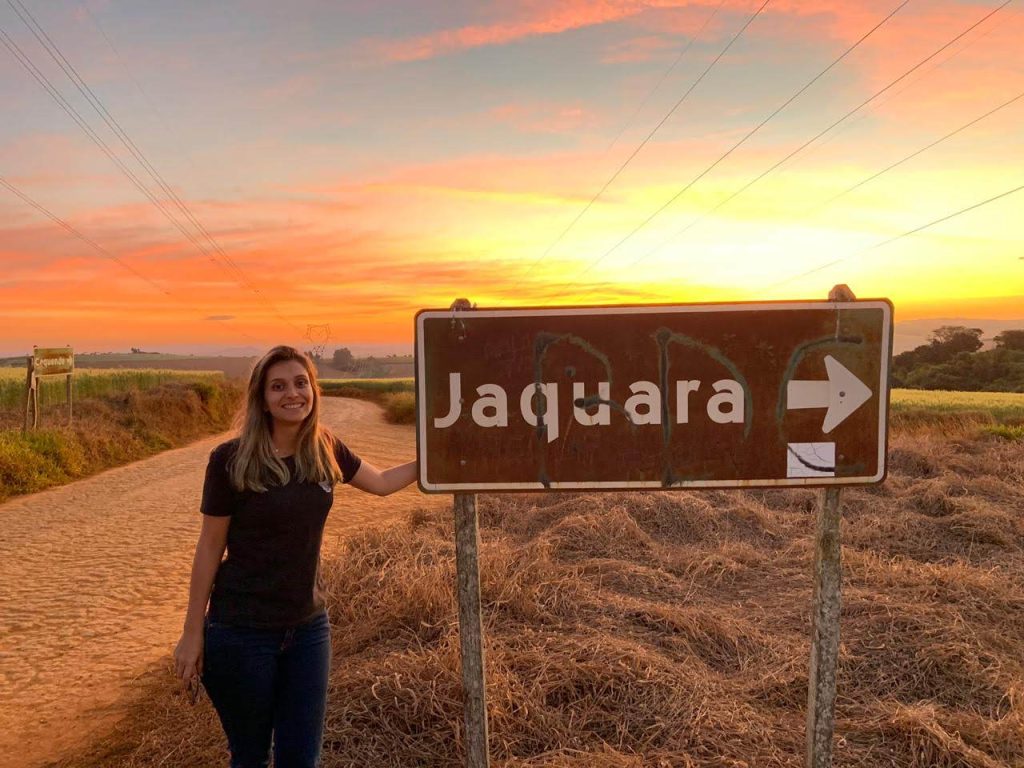
Our selection from Brazil has evolved into a variety of higher scoring, sweet and fruit driven naturals, which we can now acquire on scale. We offer a range of microlots and single varieties from smaller farmers, as well as special preps and fermented naturals.
Our efforts in establishing more efficient and regular communication with individual suppliers has definitely paid off. The special preps we source have started to feel less risky, both for us and the producers. The procedures necessary to produce such coffees have become much more stable. For example, some producers have shifted from manual picking to manual sorting, enabling a more defined cherry selection process.
This year, we’ve noticed a higher availability of lower-priced coffees. Special preps, which involve additional production costs like labour, hand-sorting, and selection, will always remain relatively expensive. Although special preps are available in the market, they are not as abundant compared to the country’s overall coffee production.
Thankfully, the climate in Brazil has not negatively impacted this year’s harvest. Producers are looking forward to a good yield, recovering from the climatic disasters of the past two seasons. Frost two years ago and last year’s heavy hail had a significant impact on the crop.
COLOMBIA
In Colombia, there are two harvesting periods each year, allowing for coffees to land every six months. This means you can plan six months of buying before more fresh lots arrive.
Prices in Colombia have cooled down as the international market adjusts to the anticipated decrease in coffee demand. The drop in the price of the dollar and the impact of La Niña on the crops led to a 14% decline in Colombian exports by April since last October. Despite these challenges, we remain optimistic that the situation will improve before the coffee year ends in September.
We believe in making a measurable impact when prices are lower. Our commitment lies in rewarding quality over quantity and ensuring transparency throughout the supply chain. When coffee is priced fairly, you can see where your money goes, while the farmers also gain a clearer understanding of how their hard work is valued.
ANTIOQUIA
- Fly Crop (“Mitaka”): April – June
- PSS: August
- Shipping: July
- Warehouse arrival: late August – early September
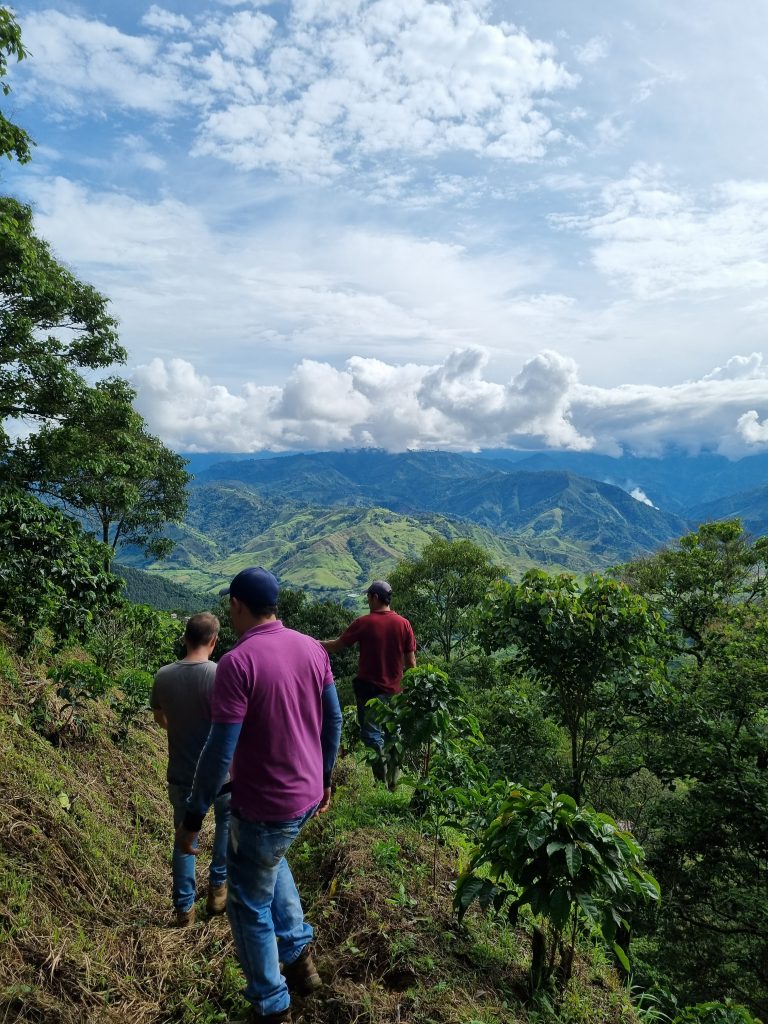
Antioquia has just completed its fly crop, and we just received pre-shipment samples in our lab. Our shipment is en route and is expected to reach our warehouse by the end of the month or early September. We’re receiving coffees from the Saldarriaga family, some with the Tabi variety – a unique cultivar in Colombia.
In this region, it’s not uncommon to come across small parchment deliveries with exceptional quality being blended and sold as low-priced commercial coffees. This happens due to the lack of a viable market. Some parchment deliveries can be as tiny as 50 kg, making them too small even for a nano-lot.
Keep an eye out for one of our projects from Antioquia called ‘La Linda’, arriving later on in the year. It was specifically established to identify exceptional, high-quality lots and ensure they are marketed at their true value. The project is named after the ‘vereda’ (sub-region) where the coffee is produced in Ciudad Bolivar. What makes coffee from this project unique is its location of production. Nestled at the end of a mountain range, its coffee plantations neighbour an untouched jungle. The area’s microclimates are perfect for producing incredibly flavorful lots.
Antioquia’s main crop is set to start in a few months, and we expect the first coffees to be shipped around November.
HUILA
- Fly crop (“Mitaka”): April – July
- PSS: June – August
- Shipping: June – July
- Warehouse arrival: June – September
We source coffees from the northern, southern, and central areas of Huila. We just received pre-shipment samples from all three areas, all from the fly crop. The main harvests typically occur towards the end of the year. Huila’s diverse microclimates have resulted in over 3 harvests in the region. It is challenging to precisely predict the exact timeframe of each one, primarily due to the area’s unstable rainfall patterns.
From our partners at Cuatro Vientos, we’re receiving distinct microlots of exotic varieties such as geshas, pink bourbons, and pacamaras. Our suppliers in Central Huila are providing us with microlots and an impressive communal blend cultivated by a group of talented female producers, under the name of Madremonte. These lots will be on our offer list soon!
NARIÑO
- Main harvest: May – September
- PSS: August
- Shipping: July
- Warehouse arrival: late August – early September
Nariño has experienced a serious boost in production over the last couple of years. This season, we have established a new partnership with a supplier in the region called San Martin. We are looking forward to receiving our shipment by the beginning of September, while pre-shipment samples are already in our lab. San Martin is providing us with a diverse range of flavour profiles from this region, with a particular focus on microlots. We’re also receiving a unique, honey-processed collective lot from the area of Aponte.
TOLIMA
- Fly Crop: April – June
- PSS: August
- Shipping: September
- Warehouse arrival: October
We have around 5 organic coffees coming from Tolima’s fly crop. We expect pre-shipment samples to be available as of next week, and our shipment is expected to land in September or October. You might be familiar with some incoming names like Clavelines or Los Alpes, as we have been buying them for more than 5 years.
The main harvest is expected to begin again in September, so we can expect more coffees from this region towards the end of the year.
INDONESIA
- Harvest: May – August
- PSS: July – August
- Shipping: July – August
- Warehouse arrival: September
Make room for some funky coffee! Our shipment from Indonesia is already on its way, filled with naturals, extended fermentation naturals, washed coffees, and some anaerobics.
As most of our Indonesian coffees are unique special preps, they are not cheap to produce. To support our suppliers at Frinsa Estate, we pre-financed our coffee purchases. Over the years, we’ve been witnessing more defined and improved product ranges, with clearer differences between the coffees. As a result, the cup quality has become more stable, leading to a more streamlined product lineup.
We use the following names to group our Indonesian lots:
Sarapan, meaning “breakfast”, is washed/honey that is delicate, calm but good with depth and intensity. Manis means “sweet”, and it describes our honey/naturals that are sometimes a little funky, but sweet. Edun, meaning “crazy” (in a good way), describes our anaerobic/experimental processes that always leave a mark on us with their crazy funk!
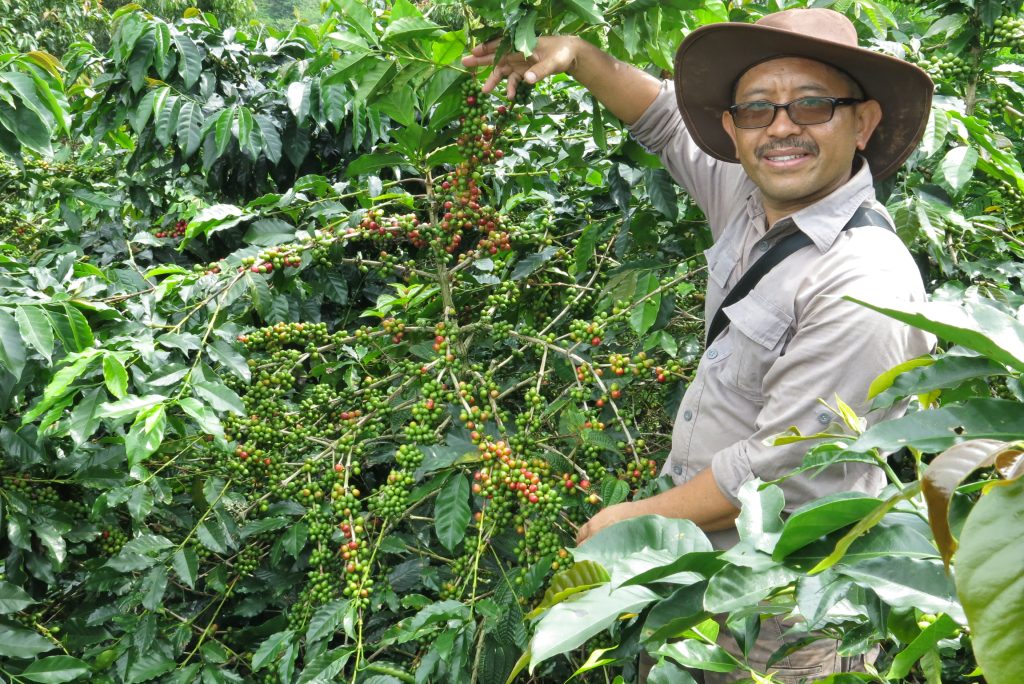
UGANDA
WEST
- Harvest: June – November, March – May
- PSS: May – December
- Shipping: September – November
- Warehouse arrival: October – December

As production resumes again in September, fresh coffees will be arriving from the start of the new year. This region has two well-defined crops: one occurring between June and November, and a smaller one between March and May.
This is highly visible at the actual farms, as it’s not uncommon to find a single branch bearing two different crop cycles simultaneously. It can be challenging for achieving necessary volume for financially viable export and import processes. However, it also opens up exciting opportunities as we can work with two distinct crop windows and have fresh Ugandan lots landing twice a year.
This year, the internal market has shown more stability, leading to a stabilisation of prices as well. Historically, the West of Uganda is known for its home-processed naturals. While these naturals have their market, we prefer to work directly with producers delivering cherries, so that we can control processing and maintain a higher standard of quality. This can often be challenging, but we always seek solutions to add value to the supply chain and create exceptional coffees.
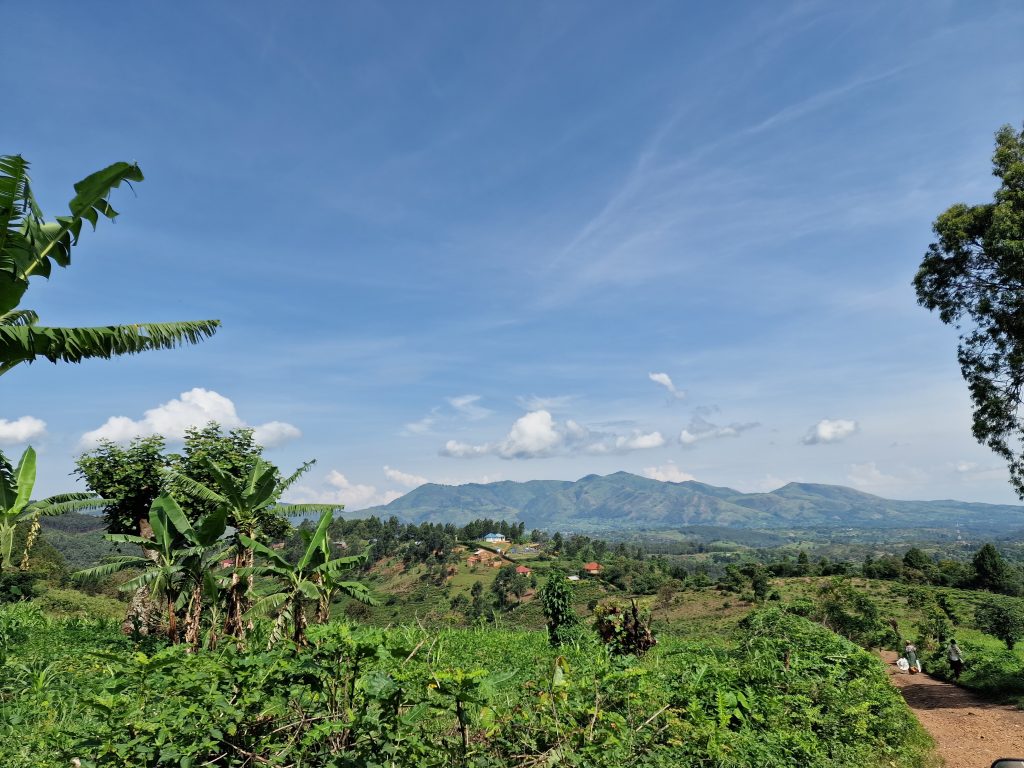
EAST
- Main harvest: November – February
- Fly crop: May – June
- PSS main harvest: December – March
- PSS fly crop: August
- Shipping: March – July
- Warehouse arrival: April – September
Similarly, the East of Uganda experiences a second harvest, but it is usually quite modest.
When we started sourcing coffee from the East of Uganda, coffee in the Bulambuli region stood out to us due to its distinct quality. Recognizing the need for enhanced quality control, farm management, and processing techniques to develop unique profiles and concept coffees, we collaborated with our partners, Ibero. In 2022, Ibero constructed a new washing station (the Bulambuli washing station) where they meticulously process our selected coffees. Their committed team of experts oversees cherry buying, financial management, farmer assistance, and traceability protocols.
The coffee arriving from Bulambuli in September comes from the fly crop, which typically ends by June. Our last shipment contains three different natural lots, all very sweet and fruit-driven. The harvest in the East will also start again in the next couple of months.
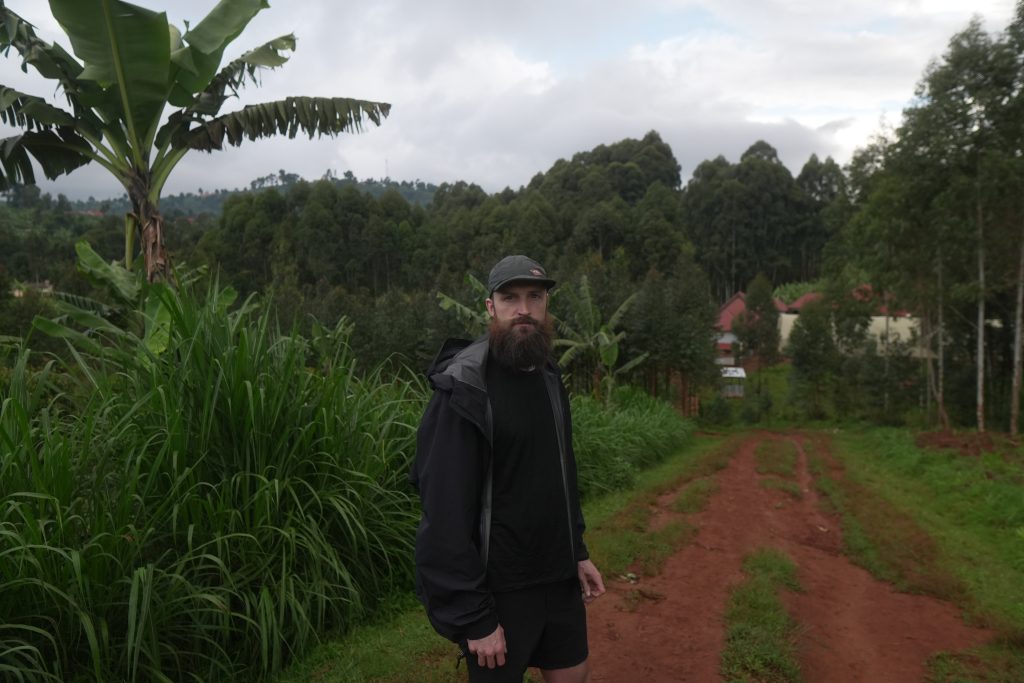
RWANDA
- Harvest: March – August
- PSS: July – August
- Shipping: August – October
- Warehouse arrival: September – November
We’ve finalised all our coffee contracts, securing two shipments from Gitesi and Mahembe, featuring both washed and natural lots. We’ve contracted single producer microlots and collective lots processed at their respective washing stations. In response to the increased demand for naturals, we’ve also sourced additional naturals from other suppliers.
Despite the country’s overall production being a little lower this year, our suppliers’ production has remained stable. There have also been some uncertainties surrounding legislation, particularly concerning a high minimum price. While this might be challenging for exporters, it’s beneficial for producers. As a result, prices are slightly higher this year.
INTERESTED IN CUPPING THESE COFFEES?
Our Autumn cupping events in Oslo & London this year are a great opportunity to do so. Check them out and reserve your spot!
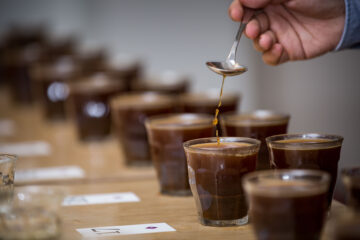
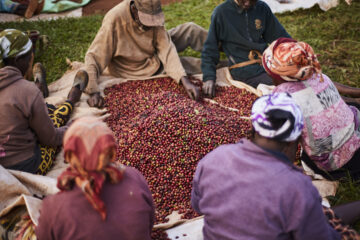
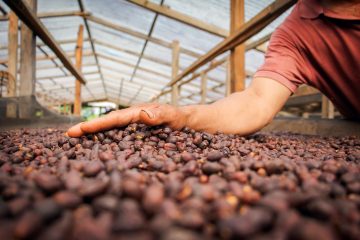
0 Comments